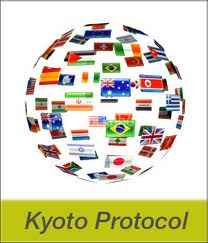Whether it is turning out in our thousands to clean up after a natural disaster or helping at a school working bee, Australians understand the importance of chipping in to get a job done. Community service is in our DNA.
It is no different when it comes to global issues like climate change. We expect our Government to ensure Australia is playing its part, not only by implementing smart and effective policies at home, but also by supporting strong international rules and frameworks.
Australians, therefore, should be proud of our Government’s decision to sign-on to phase two of the Kyoto Protocol, which remains the only international climate treaty with binding targets for reducing emissions.
The decision to join phase two of the Kyoto Protocol is a sign that the Australian Government understands the diplomatic and legal significance of this treaty and the important role it will play in securing a stronger and more effective global response to climate change.
While around the world significant progress has been made to shift to clean energy and other low pollution technologies, the stark reality is that global greenhouse gas emissions continue to rise. On current trends, the best estimate is that we will see global warming of between 3.5 and six degrees Celsius by the end of this century. While it’s not too late to turn this around the window of opportunity is rapidly closing.
Turning around global greenhouse emissions will require individuals, communities and corporations to switch from emissions intensive lifestyles and business practices to cleaner alternatives. The only way this will happen quickly enough is if governments put the right policy drivers in place.
In an ideal world national governments would see they have a common interest in solving climate change and get on with the job of implementing strong policies to reduce greenhouse gas emissions. However, in reality most governments will only implement sufficiently strong policies if they are confident that governments in competitor countries will do the same. This is where international treaties have a crucial role to play.
International treaties help to build trust between countries, allowing governments to get on with the job of implementing domestic policies in the knowledge that similar policies are being implemented in other countries. Treaties help to break the cycle of self-interest and encourage governments to act in the collective interest.
Close observers of the UN climate talks would be aware that to date self-interest has tended to trump the collective interest. Yet there are encouraging signs that this has begun to change.
Since the collapse of the Copenhagen Climate Summit in 2009 steady progress has been made to get the UN climate talks back on track. In Cancun two years ago, all major economies – including the US, China, India, Brazil, Russia and Japan – formally endorsed non-binding international targets for reducing emissions. In Durban last year, they went one step further and committed to moving to binding targets and set themselves the task of having a new global treaty in place by 2015 and in force by 2020.
To most Australians the aim of having a new global treaty with binding emission targets in place by 2015 will not sound overly impressive. In fact it signals a crucial shift in the UN talks, which for too long have been held back by divisions between major developed and developing countries. There are now signs of a compromise, with both developed and developing countries agreeing to take on binding emission targets under a single international treaty.
Clearly a new global treaty covering all countries is a tantalising prospect, but even if things go to plan it won’t be in place until 2015 and won’t come into force until 2020.
It was for this reason that in Durban last year countries also agreed to launch phase two of the Kyoto Protocol in 2013, providing a legal and political bridge between the Kyoto Protocol’s first commitment period and a new treaty being in place. Without the promise of keeping the Kyoto Protocol alive, there is no way developing countries would have agreed to move to binding emission targets in 2015.
By remaining part of the Kyoto club, Australia will help generate trust and bolster international negotiations in the coming years.
The Kyoto Protocol also remains the legal backbone of international efforts on climate change. While not perfect, these rules provide investors and policymakers with a framework to work within. The new treaty may produce better rules, but in the meantime investors need the certainty provided by the Kyoto framework.
Joining Kyoto phase two is a reaffirmation of Australia’s commitment to a rules-based global response to climate change and a down-payment on a new and stronger treaty in 2015. It sends a powerful signal to the international community that Australia will not be walking away from a job half done.
Will McGoldrick is climate change policy manager for WWF Australia.










